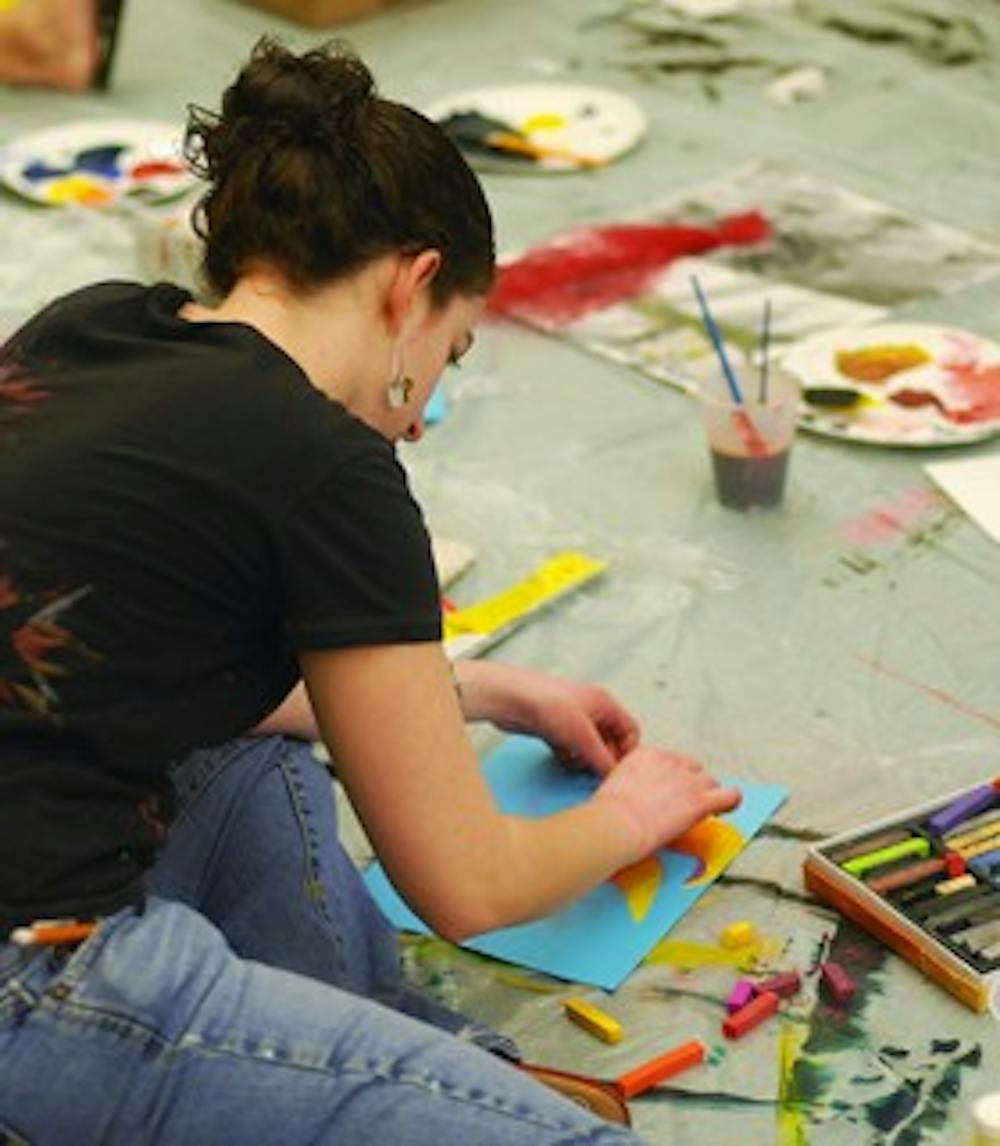College senior and Penn Art Club president Ingrid Lindquist firmly believes that “art is ubiquitous.”
The question that she, other artists and arts supporters face, however, is how to share opportunities for arts exploration with the larger community.
“As I see it, art is a way that people respond to and interact with their surroundings,” Lindquist wrote in an e-mail. “Support for the arts in any community is support for the development and expression of the individuals of that community.”
In the spring of 2007, the Art Club began offering weekly classes at West Philadelphia elementary schools. This has become one of the group’s central missions in light of current unstable funding for the arts, especially in schools.
That same imperative drives Stimulus Children’s Theater, which also brings the arts — this time in the form of theater — to local children.
“A lot of students don’t get to experience theater arts because they just don’t have the budget for it,” College senior and Stimulus Board Chairwoman Paula Aranda said.
Not only does Stimulus bring children to performances, but it also provides hands-on experiences through workshops.
Aranda explained the workshops are enjoyed because children love to play pretend but may be discouraged does not produce anything of actual value.
“As soon as they can apply it to something that is ‘real’ [like theater], it kind of livens them up,” she said. “It’s really rewarding to see them engaged and having a great time.”
After 10 years of piano lessons, College senior Ian Slack didn’t have time to continue in college — but he was able to extend his musical experiences by teaching through the Penn Music Mentoring Program, of which he is now president. The group provides music lessons and performance opportunities to area children.
Slack’s students have ranged from an eighth grader applying to a performing-arts high school to one with developmental delays who taught him that talents that don’t fall into strict boundaries of math and English.
“It’s important to encourage and foster all the talents that a child has,” he said.
The weekly music lessons are not just about building talents, but also about building mentoring relationships, he added.
Wharton junior and CityStep member Ayesha Chacko agrees with not just reaching out by teaching students to dance, but also reaching deeper into human bonds.
Members go into the same classroom for their twice-a-week, one-hour lessons to form a “real bond” with each child.
“We are not there to discipline the kids unnecessarily — they are exposed to enough conflicting modes of authority in their life,” Chacko wrote in an e-mail. “We are there to provide a creative outlet for the kids through which they can escape from their everyday lives and just let loose with people who they come to see as big brother/sister role models.”
She added that being Penn students also “helps instill the motivation to attend college after high school, something that Penn students often take for granted but that many children in West Philadelphia don’t even dream as being a possibility.”
Ty Furman, director of the Platt Student Performing Arts House, under which many of the organizations are housed, explained that, “If you’re at Penn, you have some level of privilege to be here — it’s nice for us to be able to give back.”
Yet arts interactions between Penn and West Philadelphia are more than just a one-way street. They’re a give-and-take relationship.
Local artists lend expertise and experience to Penn students, faculty and staff through venues like the Institute of Contemporary Art and the Annenberg Center for the Performing Arts.
“We do close to 50 programs throughout the year, for which our goal is to engage the community,” Jill Katz, director of marketing and communications of the Institute of Contemporary Art, wrote in an e-mail.
And though the Annenberg Center draws the majority of its audience from Center City and West Philadelphia, according to Annenberg Center Director of Marketing and Communications Nicole Cook, programming such as the “By Local” series not only “highlights [its] commitment to the Philadelphia arts community by featuring local artists,” but should also allow Penn students to explore “new and innovative” talent.
The Penn Arts Club has also been influenced by Art Speakers at Penn — which brings local artists to Harrison College House for dinner and presentations — and a link with Center City’s TKP Gallery.
“The guidance from members of the community there has opened opportunities for members of our community to explore the arts and Philly through local artists and their work,” Lindquist wrote.
She added, “The involvement of our group in the community is unique in that both we and the members of the Philadelphia community gain a lot from each other in our various scenarios of community interaction.”
And this symbiosis of the arts communities exists on many levels.
CityStep co-director Adriana Massara wrote in an e-mail, “To be totally honest, half of the time the middle schoolers teach me dance moves.”



